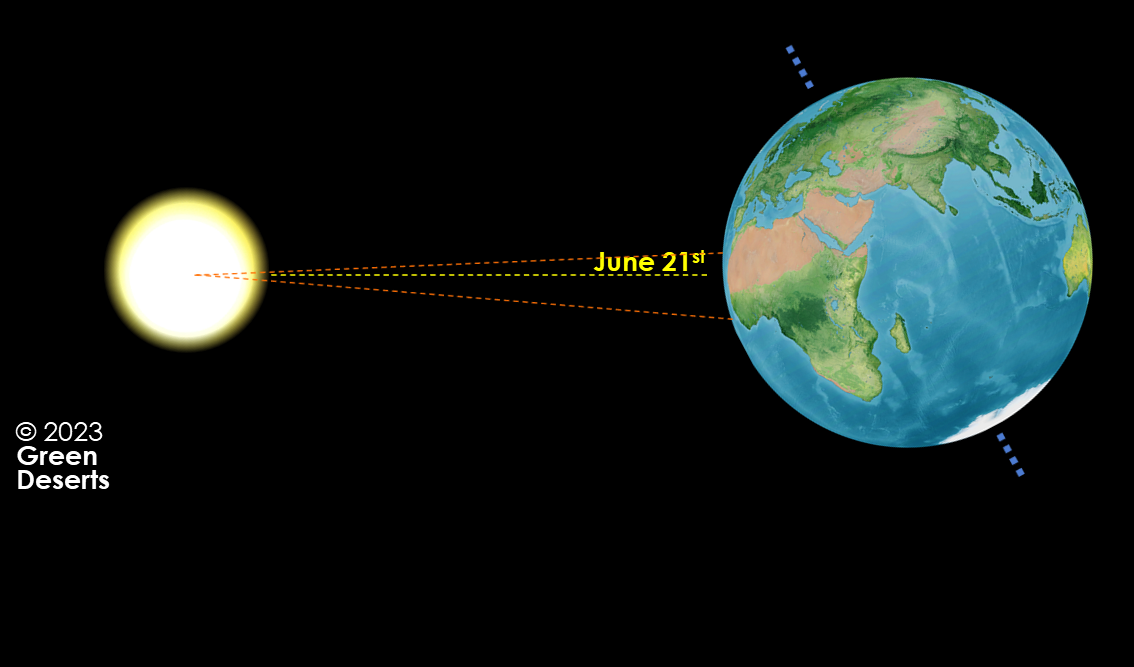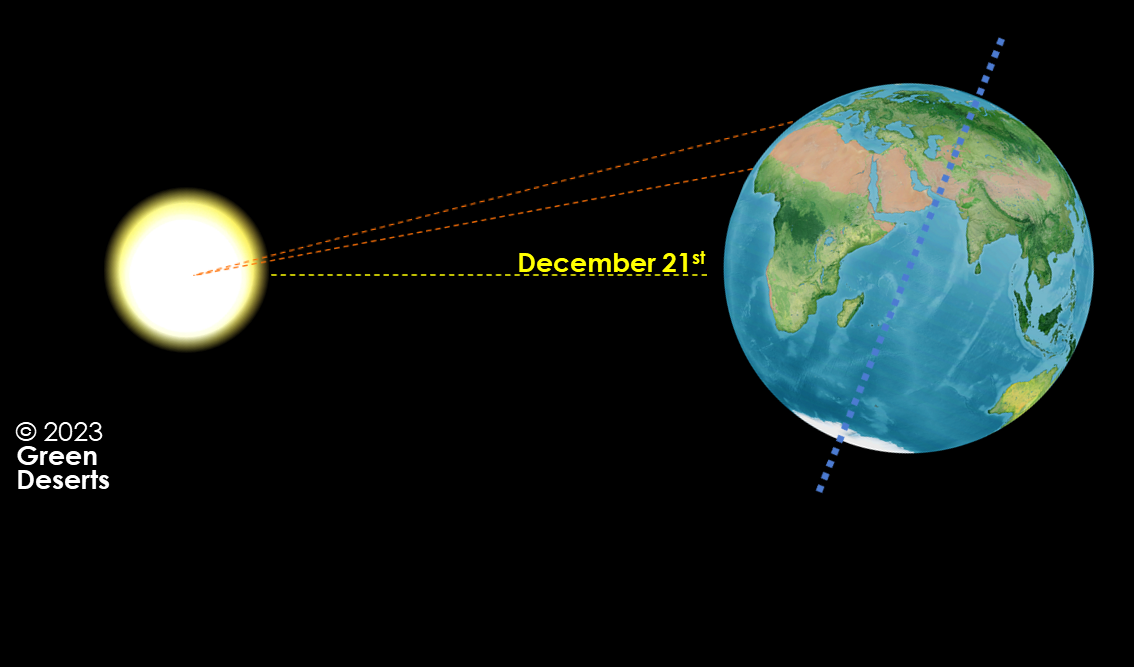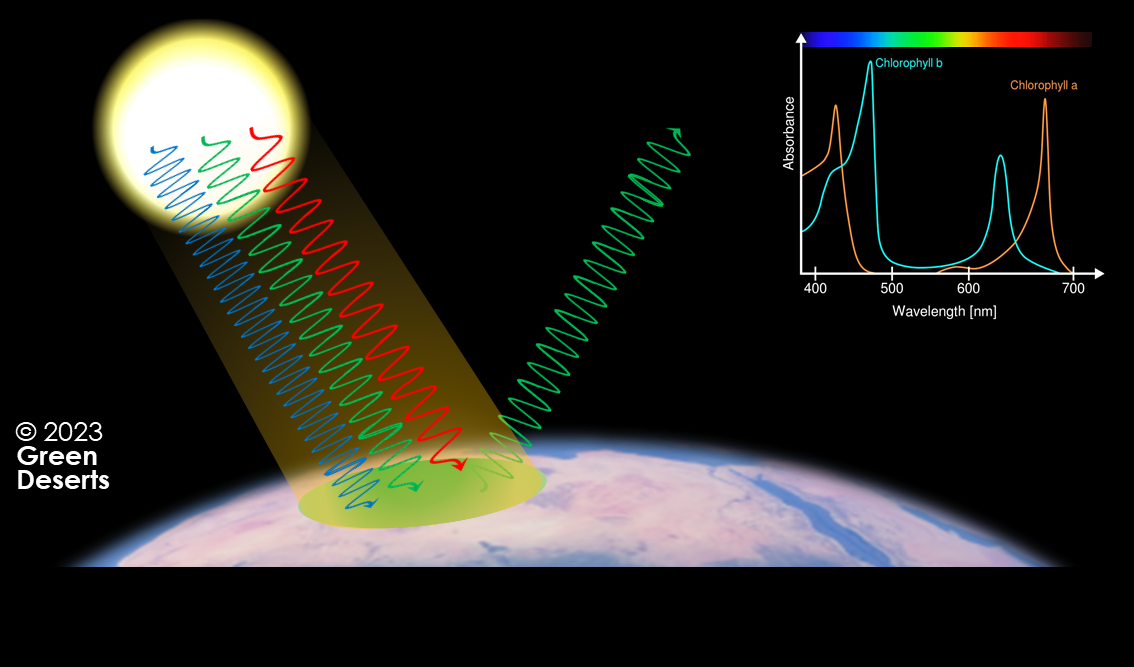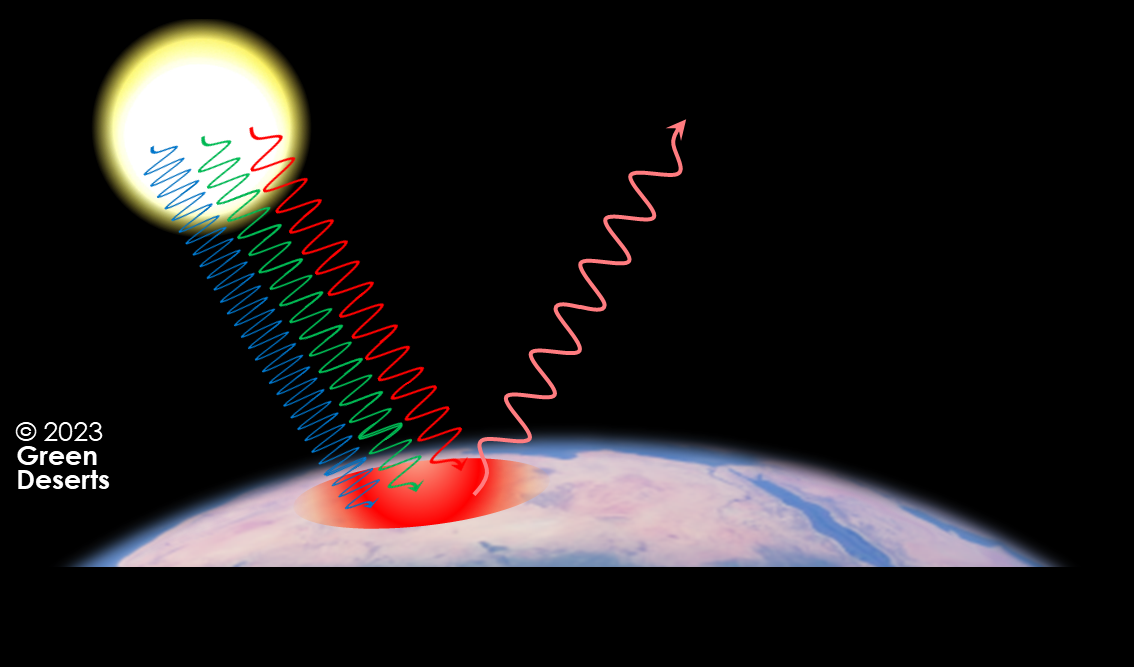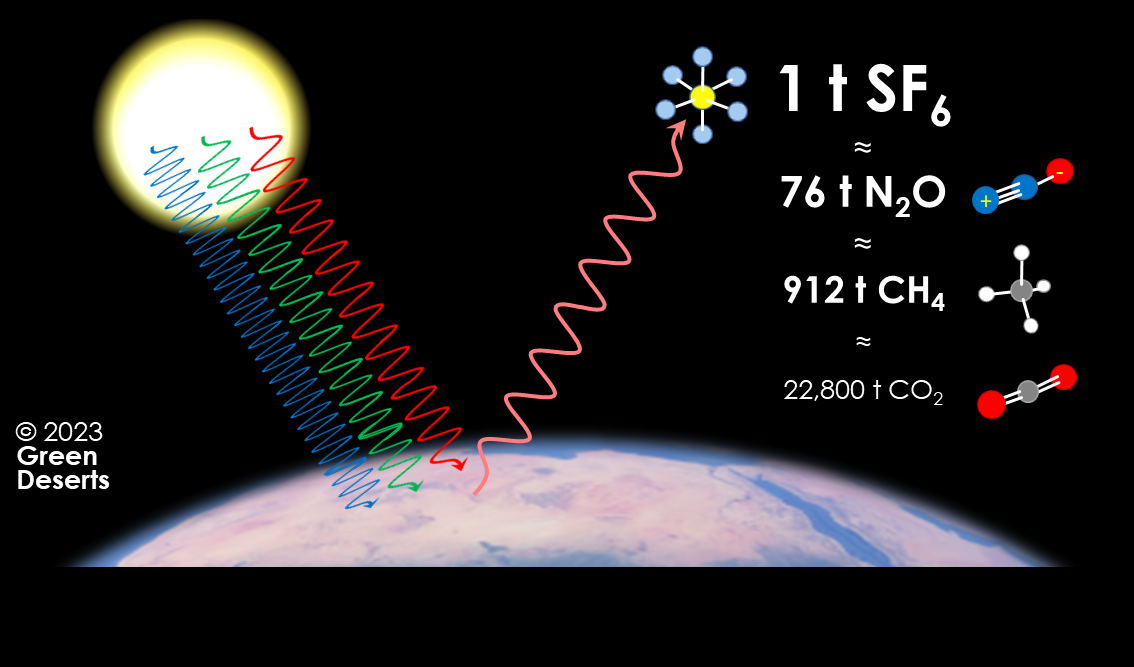Desert regions are most common in Tropic regions. The most prominent one is the Sahara Desert in North Africa.
Throughout daytime, the Sahara is almost always exposed to intensive solar radiation even in winter seasons.
If the solar radiation meets the ground, it can be absorbed or reflected. If the ground is covered by vegetation, radiation will partially be absorbed by the vegetation’s chlorophyll: it absorbs blue and red light as energy source for photosynthesis.
If there is no vegetation and bare ground only, the energy of light heats up the upper soil layers. This heat will be emitted as long-wave radiation which will heat up the atmosphere, especially if the atmosphere contains heat trapping gases like e.g. carbon dioxide (CO2), methane (CH4), nitrous oxide (N2O), or sulfuric fluoride (SF6).
Whereas carbon dioxide is a common part of the natural atmosphere, sulfuric fluorides are mainly artificial gases which are used e.g. for cooling the motors of bigger wind turbines. This is because sulfuric fluoride is more than 22,000 times ‘efficient’ in trapping heat energy than carbon dioxide. Thus, getting sulfuric fluoride into the atmosphere should be avoided.
But in fact, leaking of wind turbines cannot be foreseen, and thus, not always prevented. Accordingly, asking for more and even bigger wind turbines for producing more clean energy entails the risk of more SF6 leaking into the atmosphere.
Therefore, the ’Green Deserts’ concept aims for absorbing all the sun’s energy by solar collectors and minimising the heating of the atmosphere while maximising the output of clean energy.

